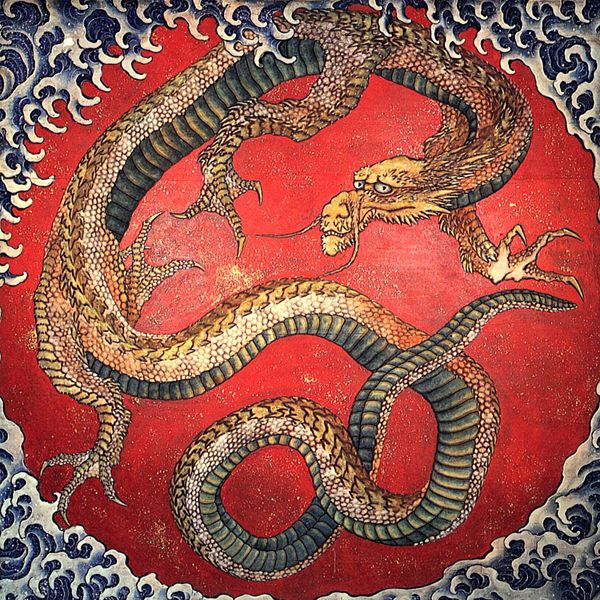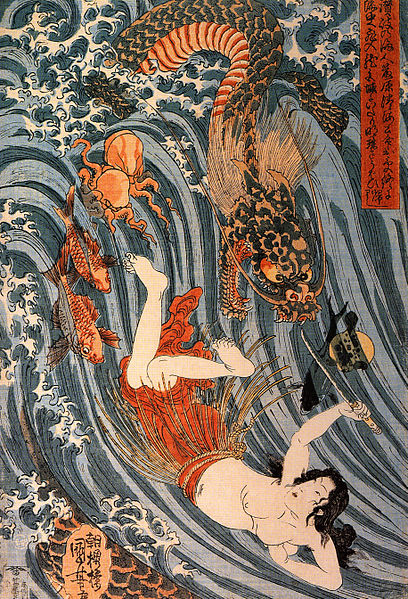Watatsumi , also pronounced Wadatsumi, is a legendary kami, Japanese dragon and tutelary water deity in Japanese mythology. Ōwatatsumi no kami is believed to be another name for the sea deity Ryūjin and also for the Watatsumi Sanjin , which rule the upper, middle and lower seas respectively and were created when Izanagi was washing himself of the dragons blood when he returned from Yomi, "the underworld".
Watatsumi Shrine in Tarumi-ku, Kobe
Watatsumi Shrine in Sumiyoshi-ku, Osaka
Japanese dragons are diverse legendary creatures in Japanese mythology and folklore. Japanese dragon myths amalgamate native legends with imported stories about dragons from China, Korea and the Indian subcontinent. The style and appearance of the dragon was heavily influenced by the Chinese dragon, especially the three-clawed long (龍) dragons which were introduced in Japan from China in ancient times. Like these other East Asian dragons, most Japanese ones are water deities or kami associated with rainfall and bodies of water, and are typically depicted as large, wingless, serpentine creatures with clawed feet.
Japanese sea-dragon, by Utagawa Kuniyoshi
Japanese dragon, by Hokusai
Princess Tamatori steals the Dragon King's jewel, by Utagawa Kuniyoshi.
Emperor Antoku's grandmother rescuing him from a dragon, by Yoshitsuya Ichieisai






